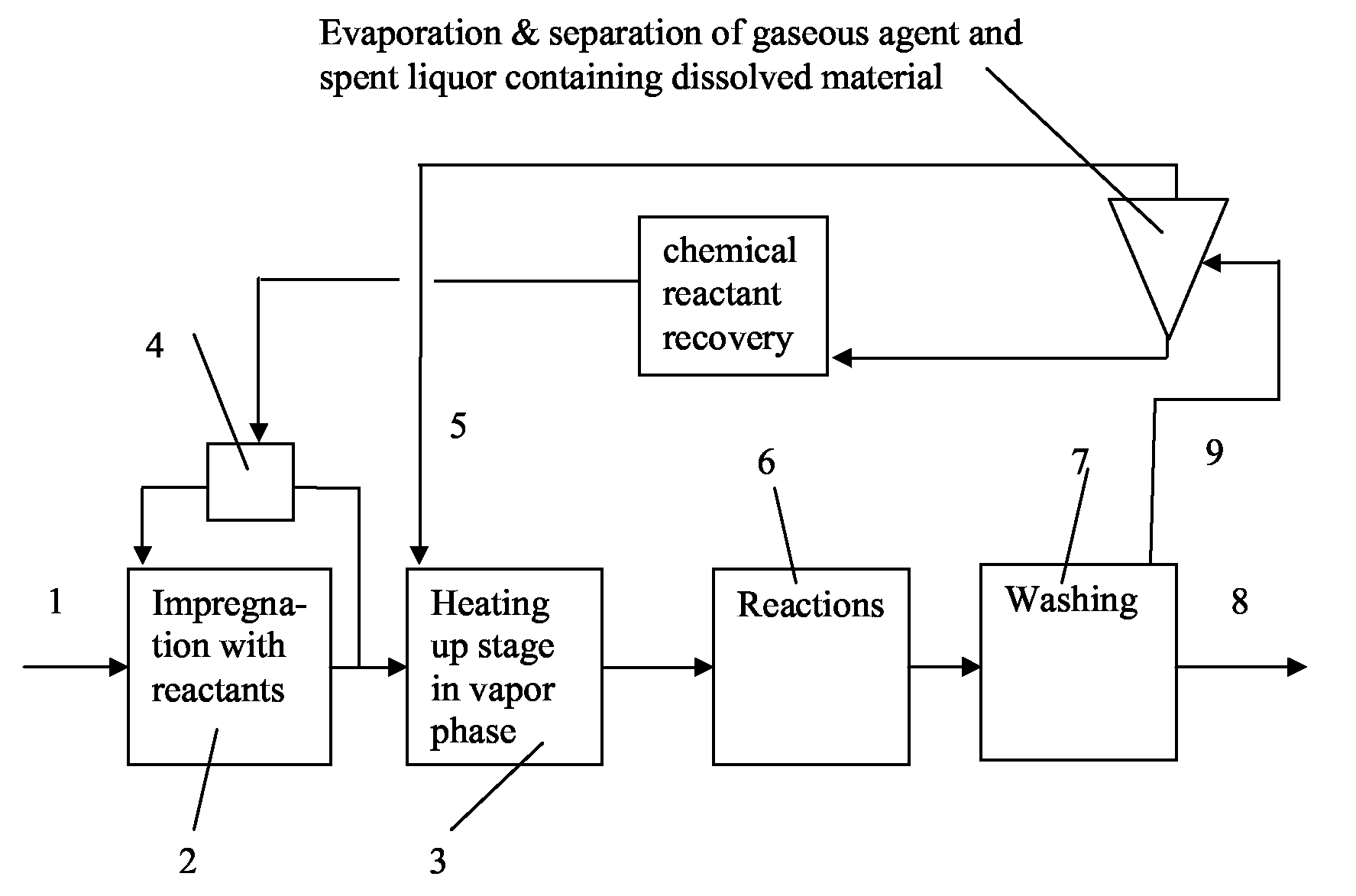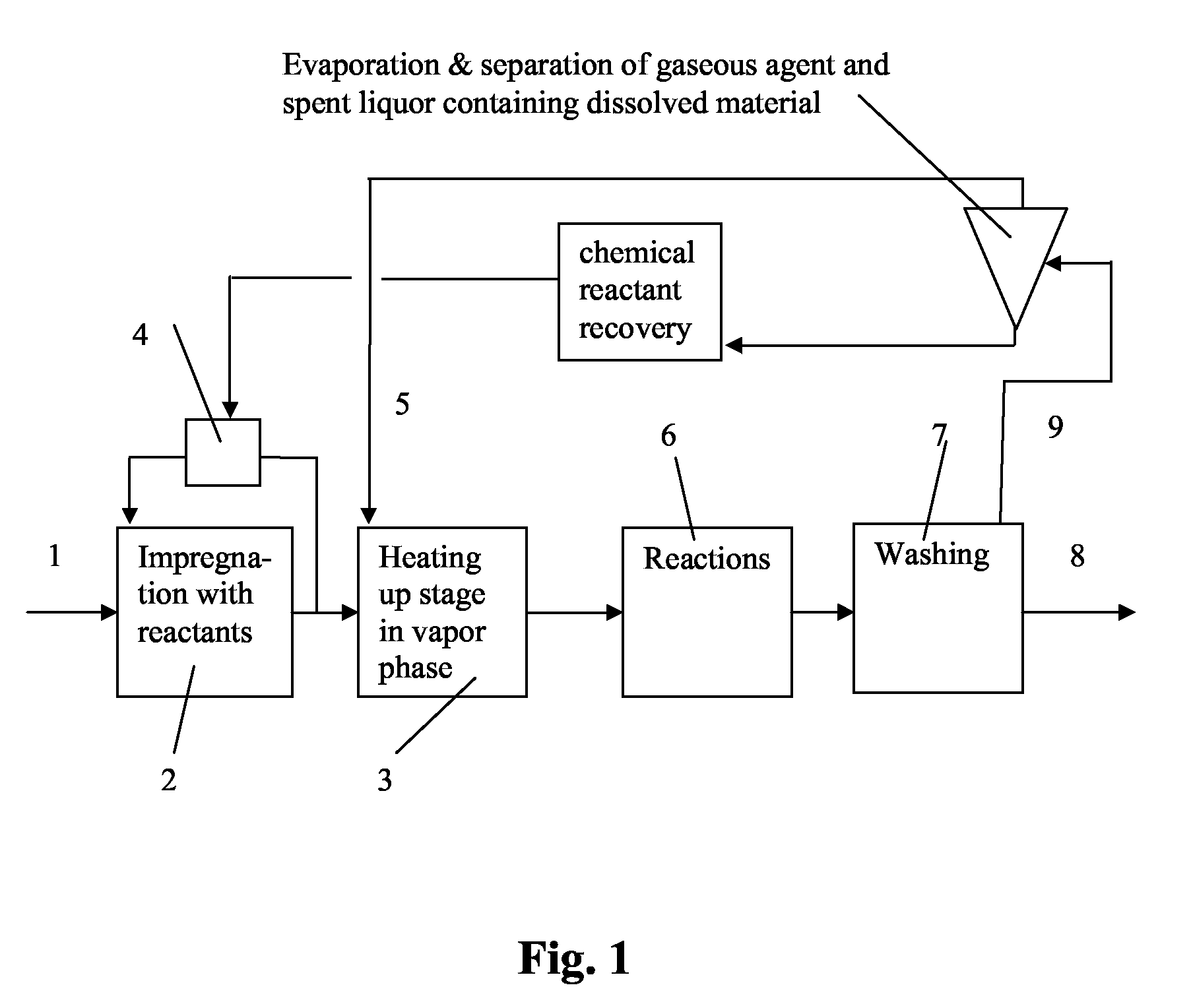Production of Pulp Using a Gaseous Organic Agent as Heating and Reaction-Accelerating Media
- Summary
- Abstract
- Description
- Claims
- Application Information
AI Technical Summary
Benefits of technology
Problems solved by technology
Method used
Image
Examples
examples
[0044]The method of the present invention can be used with a wide variety of raw materials and cooking methods. In the following examples, numerical data for tests with both wood and straw pulping is presented. All tests have been performed using the same laboratory scale digester. “Steam” refers to steam phase water.
[0045]The digester used has been purposely built to facilitate the testing of vapor phase processes. The design includes a special heating jacket that prevents the heating power of the vapor from being spent on heating the digester itself. This problem, typical for laboratory scale systems, will not arise in industrial applications as the ratio of wood to equipment weight is much higher.
[0046]Wood as Raw Material
Experimental Wood:fresh softwood mill chips, dry mattercontent 50%Batch size:400 g wood as oven dry massChemicals:mill white liquorDigester size:2200 ml
TABLE 1Amounts of liquor used in softwood pulping experiments:Cooking liquor in batch pulping2000ml(same liquo...
PUM
| Property | Measurement | Unit |
|---|---|---|
| Temperature | aaaaa | aaaaa |
| Temperature | aaaaa | aaaaa |
| Fraction | aaaaa | aaaaa |
Abstract
Description
Claims
Application Information
 Login to View More
Login to View More - R&D
- Intellectual Property
- Life Sciences
- Materials
- Tech Scout
- Unparalleled Data Quality
- Higher Quality Content
- 60% Fewer Hallucinations
Browse by: Latest US Patents, China's latest patents, Technical Efficacy Thesaurus, Application Domain, Technology Topic, Popular Technical Reports.
© 2025 PatSnap. All rights reserved.Legal|Privacy policy|Modern Slavery Act Transparency Statement|Sitemap|About US| Contact US: help@patsnap.com


